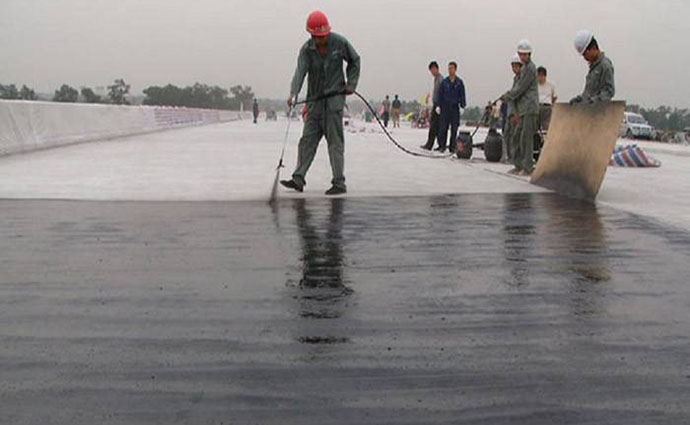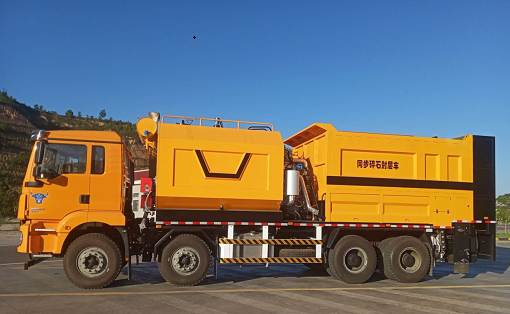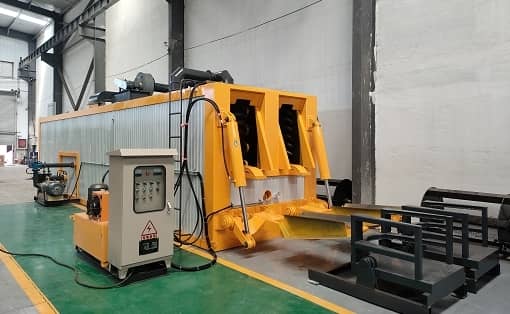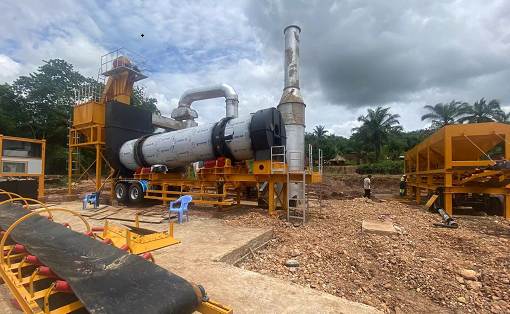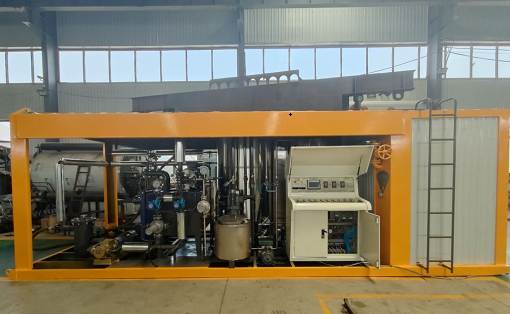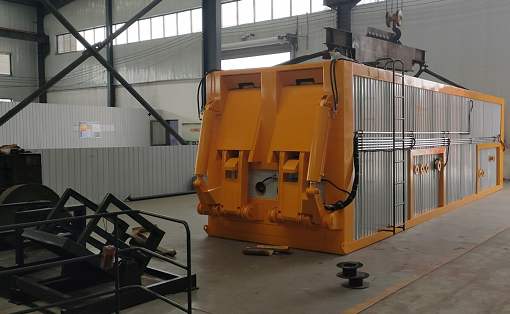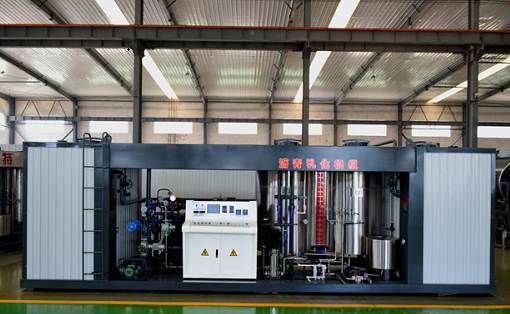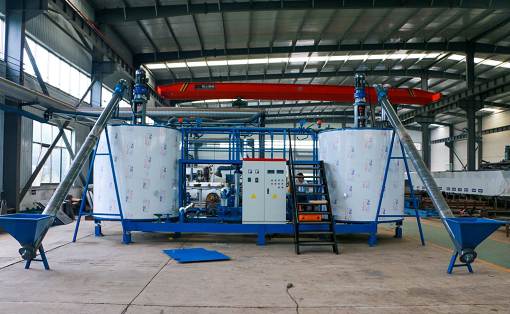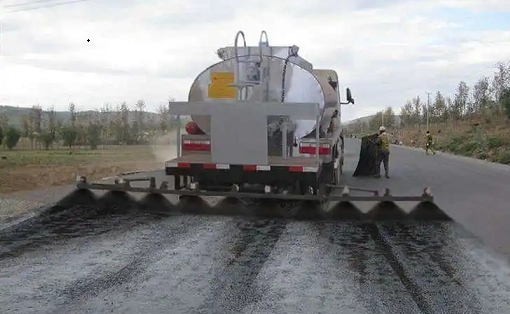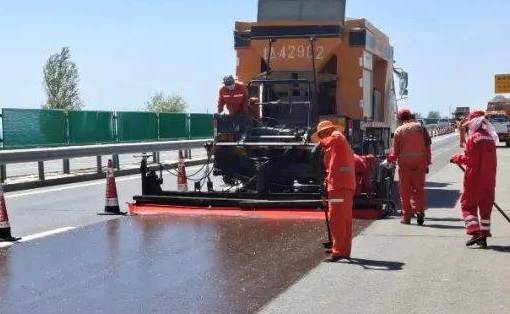8 Factors Affecting Emulsified Asphalt
Emulsified asphalt is made by hot melting asphalt, dispersing it in an aqueous solution containing an emulsifier in a fine particle state through mechanical action, forming an oil-in-water asphalt emulsion. In road construction and maintenance projects, emulsified asphalt can be used for road maintenance, bonding between road layers, bridge deck paving, permeable oil on cement-stabilized macadam foundation, slurry seal waterproof layer, etc. It has the advantages of cold construction, safety, environmental protection, resource conservation, energy conservation, extended construction season, and improved construction conditions. It plays a very important role in the construction and maintenance of municipal roads, especially in recent years, the improvement of the production level of emulsified asphalt has actively promoted the technological progress and promotion and application of emulsified asphalt. However, in the production and use of emulsified asphalt, undesirable phenomena such as crusting, flocculation, oil-water stratification, and agglomeration often occur, which brings unnecessary troubles to construction. To this end, the author conducted a large number of experimental studies from nine aspects, including emulsification equipment, emulsifier, base asphalt, pH value, temperature, storage temperature, mechanical action, freezing and melting, and long-term placement, and summarized the factors that affect the stability of emulsified asphalt. The analysis is as follows:
Emulsified asphalt is made by hot melting asphalt, dispersing it in an aqueous solution containing an emulsifier in a fine particle state through mechanical action, forming an oil-in-water asphalt emulsion. In road construction and maintenance projects, emulsified asphalt can be used for road maintenance, bonding between road layers, bridge deck paving, permeable oil on cement-stabilized macadam foundation, slurry seal waterproof layer, etc. It has the advantages of cold construction, safety, environmental protection, resource conservation, energy conservation, extended construction season, and improved construction conditions. It plays a very important role in the construction and maintenance of municipal roads, especially in recent years, the improvement of the production level of emulsified asphalt has actively promoted the technological progress and promotion and application of emulsified asphalt. However, in the production and use of emulsified asphalt, undesirable phenomena such as crusting, flocculation, oil-water stratification, and agglomeration often occur, which brings unnecessary troubles to construction. To this end, the author conducted a large number of experimental studies from nine aspects, including emulsification equipment, emulsifier, base asphalt, pH value, temperature, storage temperature, mechanical action, freezing and melting, and long-term placement, and summarized the factors that affect the stability of emulsified asphalt. The analysis is as follows:
1. The influence of emulsified asphalt equipment
An important indicator for measuring the quality of emulsified asphalt is the uniform refinement of asphalt particles. The higher the uniform refinement, the better the performance and storage stability of emulsified asphalt. The uniform refinement is directly related to the core equipment used in the production of emulsified asphalt, the emulsifier, which is the heart of the emulsification equipment. The process of crushing and dispersing the asphalt liquid phase with an emulsifier is a very complex mechanical process. Generally, the crushing and dispersion of the asphalt liquid phase is completed by shearing, extrusion, friction, impact and expansion diffusion. The quality of its performance has an important impact on the quality and stability of the emulsion. At present, there are three main types of equipment used for asphalt emulsification. In order from high to low uniform refinement of emulsified asphalt, they are: colloid mill emulsifier, homogenizer emulsifier, and stirring emulsifier. Therefore, when purchasing emulsified asphalt equipment, you should choose an emulsifier with a high degree of refinement to ensure the production quality and stability of emulsified asphalt.
2. The effect of emulsifier on stability
The type of emulsifier, the concentration of emulsifier, and various factors affecting the emulsification of emulsifiers will affect the stability of emulsified asphalt. Emulsifiers themselves have three types: fast cracking, medium cracking, and slow cracking. The prepared emulsified asphalt is also divided into three types: fast cracking, medium cracking, and slow cracking. Their stability is gradually enhanced. When the same emulsifier is used to prepare emulsified asphalt, the stability of the emulsified asphalt is also affected to a certain extent due to the different amounts of emulsifiers used. With the increase in the amount of emulsifier, the asphalt particles become smaller, the sedimentation rate slows down, the potential value between the asphalt particles increases, the viscosity of the emulsion increases, and the storage sedimentation value decreases, thereby improving the quality and stability of the emulsion. However, when the emulsifier is increased to a certain amount, its stability no longer changes significantly. Therefore, the correct selection of the appropriate dosage range of the emulsifier can ensure the quality and stability of the emulsion without causing economic waste.
3. Influence of base asphalt
Base asphalt is one of the basic components of emulsified asphalt, accounting for 50%-70% of the total. Most road emulsified asphalt uses base asphalt with a penetration of 100-250 (0.1mm). The penetration, composition and chemical structure of base asphalt have a great influence on the difficulty of its emulsification. Generally, base asphalt with high saturated molecular content and low acid value is difficult to emulsify, requiring the emulsifier to have a longer alkyl chain. The content of base asphalt can change the viscosity and other properties of emulsified asphalt. The higher its content, the greater the viscosity of the emulsion and the better the storage stability.
4. Effect of pH value
The pH value of the emulsion is closely related to its emulsification stability and storage stability. Different types of emulsifiers are suitable for different pH ranges. Anionic emulsified asphalt needs to add alkaline compounds, such as NaOH, KOH, etc., to adjust the pH value of the emulsion to 10-12. For amine emulsifier aqueous solution, inorganic acid or organic acid must be added to dissolve in water. This is because amine compounds must be converted into amine salts when used as asphalt emulsifiers. By adjusting the pH value with different acids, amine salt asphalt emulsifiers with different HLB values (hydrophilic-lipophilic balance values) can be obtained. The optimal pH value is between 3-5. When using quaternary ammonium salt emulsifiers, adding inorganic acid or organic acid can enhance the activity of the emulsifier, while improving the emulsification stability and storage stability of the emulsified asphalt, and reducing the amount of emulsifier; when preparing emulsified asphalt with quaternary ammonium salt emulsifiers, the optimal pH value of the emulsion is 5-6.
5. Effect of temperature
The temperature of asphalt and water is a relatively important process parameter. Too high or too low temperature will affect the emulsification effect of asphalt. If the temperature is low, the fluidity is poor. If the temperature is too high, it will not only consume energy and increase costs, but also vaporize water, resulting in changes in the concentration of the emulsion, that is, the ratio of asphalt to water changes, and a large number of bubbles are generated, which reduces the product quality and the stability of the emulsified asphalt. In addition, for non-ionic emulsifiers, as the temperature rises, the hydrogen chain is gradually destroyed, and its hydrophilicity decreases, especially when it is close to the “cloud point” of the emulsifier, the stability of the emulsion decreases significantly. Generally speaking, it is better to control the average temperature of asphalt and water after mixing (that is, the emulsion temperature) below 80℃-70℃.
6. Storage temperature
As the storage temperature of emulsified asphalt increases, its stability becomes worse and worse, and it may even clump (block). This is because the water in the emulsion evaporates continuously. The higher the temperature, the faster it evaporates. The surface water loss is particularly serious, which significantly changes the oil-water ratio, causing the surface to break and form a crust, and then stratify and agglomerate. At a higher temperature, the Brownian motion of the asphalt particles in the internal emulsion is accelerated, and the collision opportunities between particles increase. A small part of the emulsion breaks, causing oil and water separation, thus affecting product quality. Therefore, after the product is produced, the emulsion temperature must be lowered as soon as possible to avoid affecting the storage stability of the product.
7. Mechanical action
During the storage and operation of the emulsion, pumping and transfer, as well as mixing and processing during the application process, the emulsion will be subjected to various forms of mechanical shearing. This will give the asphalt particles considerable energy. When this energy exceeds the activation energy of aggregation, the asphalt particles will cross the potential energy barrier, causing the emulsion to lose stability and condense. It will bring difficulties to the production, various treatments and applications of the emulsion, especially in situations where the emulsion needs to be used directly, the result of condensation makes it lose its use value.
8. Freezing and melting
When the emulsion encounters low temperature conditions, it will freeze. Freezing and melting will affect the stability of the emulsion. After the frozen emulsion melts, it will cause the surface viscosity of the emulsion to increase at the least, and the emulsion will condense at the worst. Therefore, antifreeze should be taken during transportation or storage. The reason why freezing affects the stability of the emulsion is that water expands after freezing, which exerts huge pressure on the asphalt particles gathered between the ice crystals, forcing them to approach each other and finally condense together. The commonly used antifreeze measure is to add antifreeze to the emulsion. Commonly used antifreeze agents include methanol, ethylene glycol and glycerol, which can reduce the freezing temperature of the emulsion.
9. Effect of long-term placement
During the long-term placement of the emulsion, the collision between asphalt particles will cause coagulation due to Brownian motion. At the same time, the gravity will also cause the asphalt particles to settle or float, forming a coagulation layer. No matter how stable the emulsion is, it will inevitably form irreversible coagulation and be demulsified during long-term placement. Therefore, the storage period should be specified for the emulsion. Practice has shown that the stability of the emulsion is related to factors such as the size of the asphalt particles, the viscosity of the system and the environmental conditions.
In summary, emulsified asphalt is a thermodynamically unstable system, and its stability is only relative. The destruction of the asphalt emulsion will eventually occur. By analyzing the factors that affect the stability of the emulsion, it is intended to avoid these unfavorable factors as much as possible during the production, storage, operation and use of the emulsion to maintain the relative stability of the emulsion.

